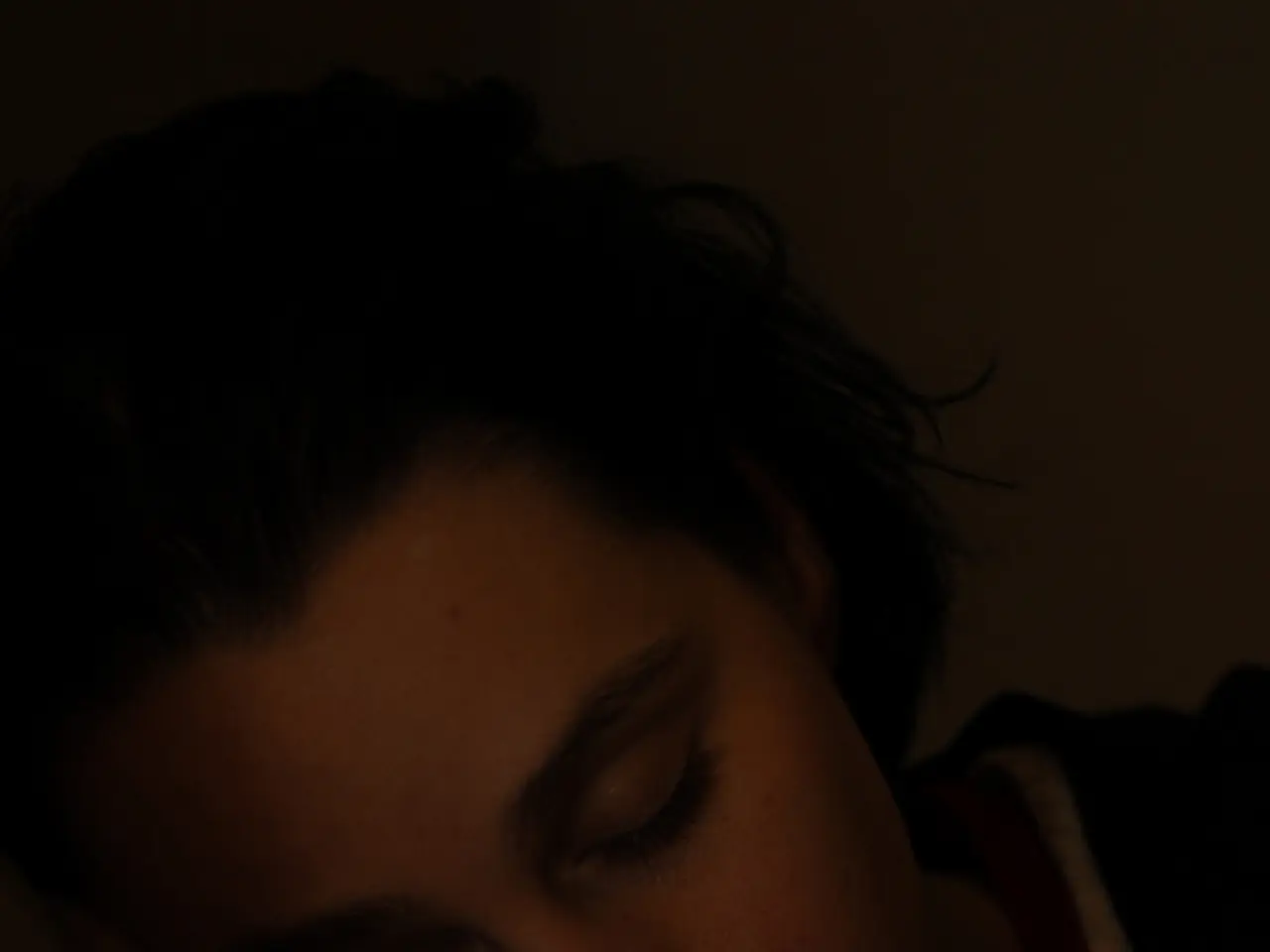Connection Between Sleep Apnea and Insomnia: An Examination
In a joint battle against comorbid insomnia and sleep apnea (COMISA), healthcare professionals recommend a strategic approach that combines standard care for each condition, with special consideration for their coexistence.
Cognitive Behavioral Therapy for Insomnia (CBT-I) is the first-line treatment for insomnia in individuals with COMISA. Highly effective for chronic insomnia, including cases with comorbid conditions like sleep apnea, CBT-I addresses the root causes of sleep disturbances and helps establish healthy sleep patterns [1][3][4].
Positive Airway Pressure (PAP) therapy, particularly Continuous Positive Airway Pressure (CPAP), remains the gold standard for treating obstructive sleep apnea (OSA). Treatment of OSA with CPAP can improve sleep parameters and may also positively impact insomnia symptoms [4]. However, people with COMISA may have greater difficulties tolerating CPAP therapy due to its discomfort.
When insomnia persists despite treating OSA, combination therapy is recommended. This approach involves using CBT-I alongside PAP therapy to address both disorders concurrently [1][4].
Pharmacological treatments, such as benzodiazepine receptor agonists (e.g., zolpidem) and dual orexin receptor antagonists (DORAs), may be considered carefully as adjuncts, especially if CBT-I is insufficient or unavailable. Zolpidem has a potential paradoxical benefit in OSA by increasing upper airway muscle tone but should be used cautiously due to risks like dependence [2].
Behavioral interventions integral to CBT-I include stimulus control therapy, relaxation techniques, sleep restriction therapy, and sometimes biofeedback or paradoxical intention. Sleep hygiene alone is insufficient but should complement other approaches [1].
Multidisciplinary assessment and ongoing monitoring are important, especially because untreated insomnia or inadequate management of OSA can worsen patient outcomes [1][5]. The British National Health Service (NHS) provides guidelines for lifestyle modifications to improve sleep for individuals with sleep apnea and insomnia. Lifestyle modifications such as losing weight, regular exercise, sleeping on the side, maintaining good sleep hygiene, and avoiding caffeine late in the day can help alleviate symptoms of COMISA.
If sleep apnea is causing or worsening insomnia, then CPAP therapy could help alleviate insomnia symptoms by treating the underlying sleep apnea. CPAP therapy is typically the treatment of choice for moderate to severe sleep apnea.
The best overall combination of CBT-I and CPAP therapy for individuals with COMISA is still uncertain and is the subject of ongoing research. If sleep apnea is causing or worsening insomnia, then CPAP therapy could help alleviate insomnia symptoms by treating the underlying sleep apnea.
People with COMISA may experience more serious symptoms than those with only insomnia or sleep apnea, including fatigue, daytime sleepiness, problems with falling asleep, staying asleep, or waking up, problems with attention, concentration, and memory, mood or social dysfunctions, and reduced quality of life. Sleep apnea can cause sleep disturbances and may cause people to wake up. Sleep deprivation from insomnia may reduce oxygen saturation and upper-airway muscle tone.
A COMISA diagnosis requires doctors to diagnose both sleep apnea and insomnia in the same individual, using methods such as questionnaires, consulting a sleep diary, actigraphy, and polysomnography. Sleep apnea may make it harder for people to gauge how long they have been awake, which could cause or worsen insomnia. There is evidence supporting the efficacy of starting CBT-I before CPAP therapy and of starting both therapies at the same time for individuals with COMISA.
- In the management of comorbid insomnia and sleep apnea (COMISA), medical-conditions like chronic diseases, mental health, nutrition, health-and-wellness, fitness-and-exercise play crucial roles due to their coexistence.
- Cognitive Behavioral Therapy for Insomnia (CBT-I), a first-line treatment for insomnia in individuals with COMISA, not only addresses the root causes of sleep disturbances but also helps establish healthy sleep patterns, even in cases with comorbid conditions like sleep apnea.
- Positive Airway Pressure (PAP) therapy, particularly Continuous Positive Airway Pressure (CPAP), is the gold standard for treating obstructive sleep apnea (OSA) and can improve sleep parameters, potentially alleviating insomnia symptoms.
- However, people with COMISA may struggle to tolerate CPAP therapy due to its discomfort, highlighting the importance of multidisciplinary assessment and ongoing monitoring in managing these chronic diseases.
- Lifestyle modifications such as losing weight, regular exercise, maintaining good sleep hygiene, sleeping on the side, and avoiding caffeine late in the day can help alleviate symptoms of COMISA, as advised by organizations like the British National Health Service (NHS).




